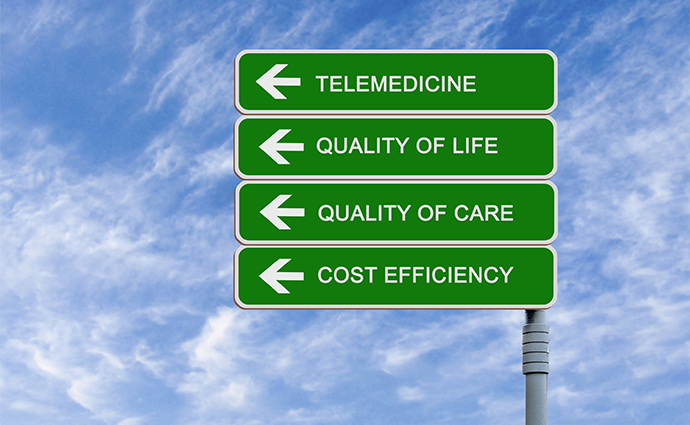For One Georgia Health System, Telehealth is Definitely Here to Stay
Augusta University Health converted its direct-to-consumer telehealth platform to handle COVID-19 screening. The success of the platform has health system executives planning for a future in connected health.

Source: ThinkStock
- A Georgia health system is planning for the future after converting its direct-to-consumer telehealth platform into a COVID-19 screening service.
The Augusta University Health System had intended to roll out its AU Express Health Care platform in April, according to Lauren Williams, AU Health’s director of population health. But with the coronavirus pandemic changing healthcare delivery strategies in March, the health system converted the online platform to 24-hour-a-day on-demand screening service.
(For more coronavirus updates, visit our resource page, updated twice daily by Xtelligent Healthcare Media.)
“This really became an all-hands-on-deck approach,” Williams says. “We had the platform already in place, so that really helped. We wouldn’t have been able to roll out as much as we have.”
The connected health platform, developed in a partnership with American Well and available on Apple and Android devices and online, uses a questionnaire to screen visitors for potential infections, and directs them to the nearest testing center if necessary. The health system worked with the Georgia Department of Public Health and the Centers for Disease Control and Prevention to create the questionnaire, and Williams says it had gone through more than 20 iterations as new data comes in on the virus.
READ MORE: COVID-19 Gives Providers a Blueprint for New Telehealth Strategies
“As the COVID-19 outbreak continues, we want to make sure that patients who are high risk for the disease are screened and evaluated in a way that avoids possible transmission to others,” Richard Schwartz, chairman of the Department of Emergency Medicine at the Medical College of Georgia at Augusta University, said in a press release shortly after the service went live. “Using the online platform for a quick telemedicine visit will direct patients who need testing to the most appropriate location for further evaluation or treatment; a practice essential for avoiding unnecessary spread of the illness.”
The platform helped the Augusta-based teaching hospital weather a particularly strong surge in mid-March, and has helped AU Health stay abreast of the ongoing pandemic. But it wasn’t an entirely smooth journey.
Williams said the health system learned pretty quickly that it needed to do more for residents who weren’t all that familiar with mHealth devices and telehealth platforms. Three weeks in, Williams said, they added a telephone line specifically designed to guide people through the process.
They also had to make sure they had all the resources at hand not only for people who met the criteria for testing, but for those who didn’t appear infected with the virus but still needed care. That meant mapping out digital pathways for every eventuality, and making sure there were either appropriate resources, digital assistants or providers at the end of those pathways.
“We’ve really taken this as a multi-disciplinary team approach,” says Williams. “We wanted this to be an ecosystem for delivering care. This involves a lot of education, and making sure we have the right providers (online.)
READ MORE: Virginia’s Fauquier Clinic Pivots to mHealth to Expand Access to Care
This also includes the IT Department. Health systems sometimes plan out a great-looking telehealth service that meets all the needs of patient and providers, but forget to make sure the back end of the platform can handle the traffic. Involving the IT folks at every step of the planning process is vital, Williams says, as is anticipating and planning for technical challenges.
“It’s more than just having providers staffing the platform,” she says. “It’s having IT support, mobile scheduling, staffing the right number of providers throughout the day and night, and making sure the (service) isn’t too complicated.”
While continuing to use the platform for COVID-19 screening, the health system is mapping out a future beyond the pandemic.
“We’ve already had those discussions,” says Williams. “We’ve seen what we can do (with telehealth) now, and it gives us a good strategy” for public health and population health programs.
Williams says the platform will eventually be used as a DTC telehealth platform for urgent care screening as well as ambulatory care services. With many scheduled visits turned into virtual care visits during the ongoing crisis, the platform has the potential to handle more than 8,000 ambulatory care visits for the health system’s 1,200 providers in 35 different clinics.
READ MORE: Oklahoma Launches Telemedicine Platform for Rural COVID-19 Guidance
And that’s not including forays into health and wellness services, chronic disease management, pre- and post-operative care management and specialty consults.
“Because of COVID-19, we’ve really escalated what we wanted to offer online,” Williams says. “But now we know how it can be done.”
One last benefit: The move to virtual care also freed up a lot of space in the hospital’s parking lot.
“That really helps,” she adds.
